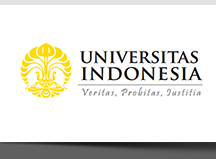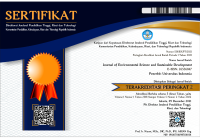Author ORCID Identifier
https://orcid.org/0009-0000-9105-8555
Article Classification
Sustainable Development
Abstract
The Indonesian Electricity Company (PLN) is one of the main players in the energy transition in Indonesia, and the company plans to achieve net zero emissions by 2060. One way to do this is by implementing the de-dieselisation program, i.e. reducing the use of diesel power plants (PLTD) with new energy and renewable power plants. The Indonesian electricity supply business plan (RUPTL) 2021-2030 targets the reduction of electricity supply from PLTD by 87% by 2030. The program requires a method to determine the order of priorities of PLTDs to be de-dieselised. This research uses multicriteria decision making, namely, analytical hierarchy process (AHP) and technique for order preference by similarity to ideal solutions (TOPSIS) to develop a prioritisation methods and determine the rank of priorities of 22 PLTDs Sumatra island that will undergo de-dieselisation. The criteria are identified from the literature and confirmed with four experts from the company. The criteria are categorised into security of supply, costs, and environmental factors. AHP is then used to calculate the weight of all criteria and sub-criteria, while TOPSIS is used to determine the rank. The results show that the affordability criterion is the most critical factor (0.535), followed by the security of supply (0.312) and environmental factors (0.153). The results also show that PLTD A18, A14 and A7 are the top three PLTDs prioritised for de-dieselisation because they provide the closest distance to the ideal criteria. This research contributes by providing reference in selecting the PLTD that will be selected for de-dieselisation program.
References
Abbas, J., Wang, L., Ben Belgacem, S., Pawar, P. S., Najam, H., & Abbas, J. (2023). Investment in renewable energy and electricity output: Role of green finance, environmental tax, and geopolitical risk: Empirical evidence from China. Energy, 269. https://doi.org/10.1016/j.energy.2023.126683
Ahadi, P., Fakhrabadi, F., Pourshaghaghy, A., & Kowsary, F. (2023). Optimal site selection for a solar power plant in Iran via the Analytic Hierarchy Process (AHP). Renewable Energy, 215. https://doi.org/10.1016/j.renene.2023.118944
Ahmad, S., Parvez, M., Khan, T. A., & Khan, O. (2022). A hybrid approach using AHP–TOPSIS methods for ranking of soft computing techniques based on their attributes for prediction of solar radiation. Environmental Challenges, 9, 100634. https://doi.org/10.1016/j.envc.2022.100634
Bhowmik, C., Bhowmik, S., & Ray, A. (2020). Optimal green energy source selection: An eclectic decision. Energy and Environment, 31(5), 842–859. https://doi.org/10.1177/0958305X19882392
C, S., & Subramaniam, S. K. (2024). Cobot selection using hybrid AHP-TOPSIS based multi-criteria decision making technique for fuel filter assembly process. Heliyon, 10(4). https://doi.org/10.1016/j.heliyon.2024.e26374
Calikoglu, U., & Aydinalp Koksal, M. (2022). Green electricity and Renewable Energy Guarantees of Origin demand analysis for Türkiye. Energy Policy, 170. https://doi.org/10.1016/j.enpol.2022.113229
Chien, F. S., Vu, T. L., Hien Phan, T. T., Van Nguyen, S., Viet Anh, N. H., & Ngo, T. Q. (2023). Zero-carbon energy transition in ASEAN countries: The role of carbon finance, carbon taxes, and sustainable energy technologies. Renewable Energy, 212, 561–569. https://doi.org/10.1016/j.renene.2023.04.116
Dong, Y., Zhang, Y., & Liu, S. (2024). The impacts and instruments of energy transition regulations on environmental pollution. Environmental Impact Assessment Review, 105, 107448. https://doi.org/10.1016/j.eiar.2024.107448
Dwivedi, P. P., & Sharma, D. K. (2023). Evaluation and ranking of battery electric vehicles by Shannon’s entropy and TOPSIS methods. Mathematics and Computers in Simulation, 212, 457–474. https://doi.org/10.1016/j.matcom.2023.05.013
French, S. (2023). Reflections on 50 years of MCDM: Issues and future research needs. EURO Journal on Decision Processes, 11. https://doi.org/10.1016/j.ejdp.2023.100030
Hassan, Q., Algburi, S., Jaszczur, M., Al-Razgan, M., Awwad, E. M., Al-Jiboory, A. K., Ahsan, M., Shalal, A. A., Cuong, N. M., Sameen, A. Z., & Salman, H. M. (2024). Adapting German energy transition rules for Iraq through industry, flexibility, and demand management. Futures, 161. https://doi.org/10.1016/j.futures.2024.103411
Heinemann, G., Banzer, F., Dumitrescu, R., Hirschhausen, C. V., Neuhoff, M. E., & Ogechi Nwadiaru, V. (2022). Transforming electricity access by replacing back-up generators with solar systems: Recent trends and evidence from Nigeria. In Renewable and Sustainable Energy Reviews (Vol. 157). Elsevier Ltd. https://doi.org/10.1016/j.rser.2021.111751
Horasan, M. B., & Kilic, H. S. (2022). A multi-objective decision-making model for renewable energy planning: The case of Turkey. Renewable Energy, 193, 484–504. https://doi.org/10.1016/j.renene.2022.04.158
Huang, R., Wang, P., & Zhang, S. (2024). Experiences and lessons for China’s energy transition: From the firewood era to the low carbon era. Energy for Sustainable Development, 78. https://doi.org/10.1016/j.esd.2023.101368
Hussain, N., Rigoni, U., & Cavezzali, E. (2018). Does it pay to be sustainable? Looking inside the black box of the relationship between sustainability performance and financial performance. Corporate Social Responsibility and Environmental Management, 25(6), 1198–1211. https://doi.org/10.1002/csr.1631
Istepanian, H. H., & Friedrich-Ebert-Stiftung Amman Office. (2020). Iraq solar energy: from dawn to dusk.
Janardhanan, N. (2017). Energy Transition in India: Role of Climate Change Policies in Energy Security. International Studies, 54(1–4), 231–249. https://doi.org/10.1177/0020881718791851
Karatas, M., Sulukan, E., & Karacan, I. (2018). Assessment of Turkey’s energy management performance via a hybrid multi-criteria decision-making methodology. Energy, 153, 890–912. https://doi.org/10.1016/j.energy.2018.04.051
Kilic, H. S., & Yalcin, A. S. (2020). Modified two-phase fuzzy goal programming integrated with IF-TOPSIS for green supplier selection. Applied Soft Computing Journal, 93. https://doi.org/10.1016/j.asoc.2020.106371
Kornek, U., Klenert, D., Edenhofer, O., & Fleurbaey, M. (2021). The social cost of carbon and inequality: When local redistribution shapes global carbon prices. Journal of Environmental Economics and Management, 107. https://doi.org/10.1016/j.jeem.2021.102450
Li, S., Zhang, L., Wang, X., & Zhu, C. (2022). A decision-making and planning optimization framework for multi-regional rural hybrid renewable energy system. Energy Conversion and Management, 273. https://doi.org/10.1016/j.enconman.2022.116402
Ma, W., Xiao, C., Ahmed, S. F., Feng, T., & Liu, G. (2023). Multi-objective carbon neutrality optimization and G1-EW-TOPSIS assessment for renewable energy transition. Journal of Cleaner Production, 415. https://doi.org/10.1016/j.jclepro.2023.137808
Mercado Fernandez, R., & Baker, E. (2022). The sustainability of decarbonizing the grid: A multi-model decision analysis applied to Mexico. Renewable and Sustainable Energy Transition, 2. https://doi.org/10.1016/j.rset.2022.100020
Mustafa Kamal, M., Asharaf, I., & Fernandez, E. (2022). Optimal renewable integrated rural energy planning for sustainable energy development. Sustainable Energy Technologies and Assessments, 53. https://doi.org/10.1016/j.seta.2022.102581
National Electricity Company (PLN). (2021). Electricity supply business plan (RUPTL).Https://Web.Pln.Co.Id/Statics/Uploads/2021/10/Ruptl-2021-2030.Pdf.
Naz, M. N., Mushtaq, M. I., Naeem, M., Iqbal, M., Altaf, M. W., & Haneef, M. (2017). Multicriteria decision making for resource management in renewable energy assisted microgrids. In Renewable and Sustainable Energy Reviews (Vol. 71, pp. 323–341). Elsevier Ltd. https://doi.org/10.1016/j.rser.2016.12.059
Nolting, L., & Praktiknjo, A. (2022). The complexity dilemma – Insights from security of electricity supply assessments.Energy, 241. https://doi.org/10.1016/j.energy.2021.122522
Oh, S., Kim, S., Cho, I., Kyaw, Z. H., & Heo, E. (2023). Myanmar’s decision-making structure for the introduction of renewable energy. Journal of Cleaner Production, 413. https://doi.org/10.1016/j.jclepro.2023.137254
Özkale, C., Celik, C., Turkmen, A. C., & Cakmaz, E. S. (2017). Decision analysis application intended for selection of a power plant running on renewable energy sources. In Renewable and Sustainable Energy Reviews (Vol. 70, pp. 1011–1021). Elsevier Ltd. https://doi.org/10.1016/j.rser.2016.12.006
Pinto, H., & Gates, I. D. (2022). Why is it so difficult to replace diesel in Nunavut, Canada? Renewable and Sustainable Energy Reviews, 157. https://doi.org/10.1016/j.rser.2021.112030
Saaty, T. L. (2008). Decision making with the analytic hierarchy process. In Int. J. Services Sciences (Vol. 1, Issue 1).
Shao, M., Han, Z., Sun, J., Xiao, C., Zhang, S., & Zhao, Y. (2020). A review of multi-criteria decision making applications for renewable energy site selection. In Renewable Energy (Vol. 157, pp. 377–403). Elsevier Ltd. https://doi.org/10.1016/j.renene.2020.04.137
Shariatkhah, M. H., Haghifam, M. R., Chicco, G., & Parsa-Moghaddam, M. (2016). Adequacy modeling and evaluation of multi-carrier energy systems to supply energy services from different infrastructures. Energy, 109, 1095–1106. https://doi.org/10.1016/j.energy.2016.04.116
Sinha, A., Bekiros, S., Hussain, N., Nguyen, D. K., & Khan, S. A. (2023). How social imbalance and governance quality shape policy directives for energy transition in the OECD countries? Energy Economics, 120. https://doi.org/10.1016/j.eneco.2023.106642
Solangi, Y. A., Longsheng, C., & Shah, S. A. A. (2021). Assessing and overcoming the renewable energy barriers for sustainable development in Pakistan: An integrated AHP and fuzzy TOPSIS approach. Renewable Energy, 173, 209–222. https://doi.org/10.1016/j.renene.2021.03.141
Solangi, Y. A., Tan, Q., Mirjat, N. H., & Ali, S. (2019). Evaluating the strategies for sustainable energy planning in Pakistan: An integrated SWOT-AHP and Fuzzy-TOPSIS approach. Journal of Cleaner Production, 236. https://doi.org/10.1016/j.jclepro.2019.117655
Subramanian, N., & Ramanathan, R. (2012). A review of applications of Analytic Hierarchy Process in operations management. In International Journal of Production Economics (Vol. 138, Issue 2, pp. 215–241). Elsevier B.V. https://doi.org/10.1016/j.ijpe.2012.03.036
Tol, R. S. J. (2019). A social cost of carbon for (almost) every country. Energy Economics, 83, 555–566. https://doi.org/10.1016/j.eneco.2019.07.006
Tzeng, G.-H., & Huang, J.-J. (2011). Multiple Attribute Decision Making: Methods and Applications.
Xie, S., & Zhang, J. (2023). TOPSIS-based comprehensive measure of variable importance in predictive modelling. Expert Systems with Applications, 232. https://doi.org/10.1016/j.eswa.2023.120682
Yang, B., Zhao, J., & Zhao, H. (2022). A robust method for avoiding rank reversal in the TOPSIS. Computers and Industrial Engineering, 174. https://doi.org/10.1016/j.cie.2022.108776
Zoma, F., & Sawadogo, M. (2023). A multicriteria approach for biomass availability assessment and selection for energy production in Burkina Faso: A hybrid AHP-TOPSIS approach. Heliyon, 9(10). https://doi.org/10.1016/j.heliyon.2023.e20999
Recommended Citation
Nurdianto, Kresna and Kusumastuti, Ratih Dyah
(2024).
DETERMINING THE DE-DIESELISATION PRIORITIES OF DISTRIBUTED DIESEL GENERATORS IN AN ELECTRICITY COMPANY.
Journal of Environmental Science and Sustainable Development, 7(2), 728-742.
Available at: https://doi.org/10.7454/jessd.v7i2.1263
Included in
Business Analytics Commons, Environmental Studies Commons, Operations and Supply Chain Management Commons








